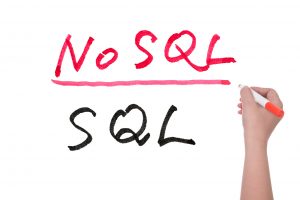The key to innovation is data and where that data is stored. How it’s moved around and used also matters. Traditional data centers allowed engineers to collect data in greater volumes than ever, but it also allowed for data silos and information blocking in the name of competitive advantage disguised as privacy.
It’s for this reason that some of the world’s best-known innovators, such as Google, Amazon and Microsoft, have pushed for healthcare providers and agencies to join retailers and private businesses by moving their data to the cloud.
“Run to the cloud,” Eric Schmidt, the former Chairman of Google’s parent company Alphabet Inc., said at HIMSS18 in Las Vegas. He noted that proprietary data centers were logical 10 years ago, but cloud solutions now are more secure and allow the health IT sector to focus on innovation. He also encouraged the development of an open data architecture and said the sector needs to take advantage of advances in machine learning.
Schmidt’s comments were conveniently timed as Google announced that the Google Cloud now has the Cloud Healthcare API, an open data architecture that can help overcome interoperability woes and allow all of healthcare to plug into machine learning technology. In a Google Blog post, the company calls it a “robust, scalable infrastructure solution to ingest and manage key healthcare data types—including HL7, FHIR and DICOM.”
Cloud migration ranks among one of the most popular trends expected to occur in the coming years, according to industry analysis from HIMSS Analytics.
As data flows toward cloud platforms, the impact will be significant for interoperability when combined with the regulatory framework Trusted Exchange Framework and Common Agreement, set to be rolled out in the form of the later this year.
If cloud platforms can proliferate to the extent that many hope, while complying with HIPAA security standards, creating connectivity between health information networks will be far simpler than it is today.
But it’s not just about connecting EHRs with clinicians around the nation. A more futuristic vision for interoperability will include analytics that will impact both the research and direct care communities, and allow for data to be shared in ways that take advantage of machine learning to improve overall population health as well as individual cases.
Innovators see healthcare as a frontier where innovation has long been hampered by overly aggressive regulations and a distrust of technology. With the regulatory landscape changing and becoming more tech friendly, the potential for a healthcare innovation market is becoming clearer.
HIT the Jackpot
According to predictions from IDC and IT consultancy Gartner, global IT spending is set to explode, with healthcare playing a large part in that economic boom. As part of that, we can expect to see heavy investments in areas such as blockchain, internet of things development, artificial intelligence and what is broadly referred to as “digital transformation.”
Worldwide spending across all industries will be in the trillions. What portion of that financial outlay will be specific to healthcare remains to be seen, but if recent developments from the tech sector’s biggest names are any indicator, it’s likely to be significant.
Five major companies, Alphabet, Apple, Facebook, Microsoft and Amazon, now have healthcare-focused skunk works in place and are hiring healthcare-specific talent. Each is taking a different approach to innovation in the space.
Where tech companies were once happy to contribute to healthcare as a market through wearables, their vision for the future is beginning to include medical services. Alphabet is looking to play a major part in the AI conversation, while Amazon is now partnering with JP Morgan Chase and Berkshire Hathaway to create a not-for-profit healthcare provider specifically for their employees.
Apple, for its part, is focused on hardware, according to reports from the Economist. Their approach, rather than focusing on health services or the data itself is to turn the devices Apple creates into “trusted, secure channels through which medical data can flow.”
This is important, because that approach does two things. First, it puts health information and the applications that can be developed around it on a platform the consumer is already using regularly. Secondly, it increases the usefulness of Apple’s Health Records app, the company’s primary health-related software.
Able to collect all of a patient’s available medical data in one place, Health Records may succeed where Google and Microsoft’s attempts to step into the EHR management space through cloud computing failed. By putting the data in the consumer’s hands and having it encrypted through the user’s iPhone passcode, Health Records could be the key to giving patients the power over who sees their data and be an important tool in educating consumers on uses of health data.
Having broader health data on their phones allows users to download complementary apps such as calorie counters and combine that data with health records for a more complete picture of overall wellness. As Dr. Shez Partovi, Chief Digital Officer for Dignity Health, put it in an interview with Healthcare Informatics Magazine, “the app store will allow the meaning of the data to come out.”
Meanwhile, Facebook has been working toward mental health monitoring by looking at online behavior. They also want to match people to clinical trials based on symptoms they discuss online.
Why Now?
The potential economic impact of innovators known for disruption that are entering healthcare is significant. There’s no shortage of money to be made by them or any potential partners.
As noted in the Economist piece, healthcare typically accounts for a tenth of a country’s gross domestic product. Health insurance giants UnitedHealth Group and CVS Health are two of the largest companies in the U.S. by revenue, having made $185 billion and $178 billion, respectively, in 2016.
Despite massive profits of their own, most tech companies outside of Apple don’t rake in anywhere near that kind of revenue. If these Silicon Valley companies can make waves in the healthcare sector, it’s possible they could disrupt the dominance of giants in pharmaceuticals, health insurance and health services to grow their own revenue and, perhaps just as important, their cultural influence on an even larger scale.




